
WARNING: This essay contains no spoilers, but only because I don’t care.
Was 2015 the year of the spoiler? Aversion to any public discussion of plot details has been bubbling up since DVRs became commonplace and even more so once streaming services began releasing entire seasons of debut shows all at once. As a result of the two, or simply as a byproduct of the lessons learned from the Golden Age of Television, television dramas, and even comedies, became more serialized, meaning learning a plot detail could reveal secrets of multiple episodes or a whole season instead of just this week’s caper/case/folly.
But spoiler warnings became industrialized this year, with the release of Star Wars: The Force Awakens, highly competently directed and cowritten by a flesh-coated vessel of the Walt Disney Corporation. Reviews, even those from serious outlets, carried seemingly obligatory promises that they didn’t contain spoilers, and think pieces made sure to warn readers that they did. My Facebook and Twitter feeds filled with people bemoaning the possibility that some evil people somewhere might spoil The Force Awakens, followed by threats that they would either leave social media for a few days until they had seen the movie (mostly not actually carried out) or unfriend anyone who revealed plot details (carried out in at least some cases). Some claimed that even saying whether a person liked the movie or not constituted a spoiler. In what I hope was good humor, comics stores posted signs threatening to ban for life those who spilled plot details. They probably don’t do that if you shoplift or punch or grope someone, at least not the first time. (It is worth pointing out that the story of the person beaten up for shouting a spoiler in a movie theater was not real.) The whole thing was spoken of as though to reveal anything about the movie was an unforgivable crime, an act of violence against the poor nerds who had already suffered so much. Spoiler warnings somehow became trigger warnings.

The whole thing was so fervent and so universal as to feel unnatural, as if it were all part of the marketing campaign, the publicity teams at LucasArts and Disney expertly playing fans. As a friend pointed out, there is plenty of precedent, going back at least to Alfred Hitchcock’s Psycho, in which the marketing materials warned that no one would be let in late and implored viewers not to reveal the movie’s twists to anyone. In the era of social media, marketers have perfected making fans believe that such a thing is their idea, not something they’re being told. I never actually saw any Force Awakens spoilers, and while I didn’t go out of my way to find them, nor did I make any effort to avoid them. Other people I know did see some and dutifully unfriended the offenders, but none seemed as desolated by whatever details they had learned as they’d feared, just annoyed.
To be clear, I’d be annoyed too. If I know I’m seeing a movie, I prefer to go in knowing as little as possible to let the experience unfold before me with a minimum of prior expectation. I don’t tend to see trailers for movies I know I’m going to unless they show before another movie I’m at, and I save the reviews of my favorite critics to read after I watch. Surprises are fun, and I went to at least one movie this year knowing literally nothing about it other than that people I respect had raved.
So I understand all that. However, I cannot relate to the recent mania over spoilers, the apocalyptic manner in which the faithful spoke in panicked, hushed tones of their fears of The Force Awakens being “spoiled”—and how I hate that word, reducing the experience of a movie to its plot points, with the implication that foreknowledge of them ruins everything. If knowing a few plot details in advance ruins one’s enjoyment of a movie, then that enjoyment was taking place on a narrow register of what movies offer. Fandom, at its worst, is a fetishism of details over aesthetic, and it’s distressing to those who actually care about movies and other forms of storytelling.
A movie is so much more than its plot. At risk of being sent to editor jail, I’m not sure that I place plot in the top five of things I care about in a film story, not when there are voice, tone, theme, performances, dialogue, cinematography, rhythm, and so many other aesthetic elements to consider. All of these are dismissed when fans fixate on spoilers. I like a good plot, and some of my favorite movies have some of my favorite plots, but the majority of the movies I treasure, I do not primarily do so for the plot, for if plot were truly primary, there would be much less incentive to once again revisit something I had watched so many times before.
A plot, at its most basic level, is simply a device to make a story take place over a period of time, since we are not capable of experiencing the above list of aesthetic elements in a single instant. At the commercial art level, the plot exists to move the characters into place so that audiences are teased to return for the next installment. It is in the interest of a studio like Disney to make its Star Wars movies primarily about what happens next, as that is ultimately controllable, and it’s easier to keep fans in a state of anticipation by constantly emphasizing the next movie over the current one. More so than the films themselves, this is the innovation and the art of the Marvel movies.
Ironically when I saw the movie (disclaimer: for free) it didn’t contain a single surprise or unpredictable moment, with nearly everything that takes place obvious almost from the first act. That it so closely follows the beats of the original Star Wars is a factor, but everything is telegraphed anyway, and I doubt those who have never seen a Star Wars film before would have much difficulty guessing where the story is going. The more I think about it, the more clearly intentional that decision must have been, with the movie serving as a soothing pat on the head to those fans burned by the 1990s–2000s Star Wars trilogy. Those few elements that are genuinely new appeared only in vague “mystery box” form, all part of the tease for the new episode. The marketing machine has already geared up to insist that next time big, unpredictable things will happen, and maybe it’s true, maybe it isn’t.
And inevitably, fans who love the new movie do not do so primarily for the plot. Even its loudest defenders feel compelled to make excuses for its many repetitions, coincidences, and illogical turns. Instead, they are taken with its new characters, its action sequences, the nostalgic rush of its skillful callbacks (with attendant groans at its clunkier ones), and the unprecedented sight of a Star Wars movie composed entirely of good performances. Those who have seen it a second time mostly report enjoying it more on that subsequent viewing, despite knowing the entire plot in advance. While those who stumbled upon unwelcome plot details before their first viewing likely had their initial enjoyment diminished by a percentage point or two, I’m willing to bet that they got over it once they were sucked in, and for all of the time they spend with the movie in the future it will simply be a nonfactor.
Nor are the pleasures of the original Star Wars movies in their plots, but rather their themes, worlds, humor, busted-racecar aesthetic, and sometimes characters. This is not a condemnation of their plots, which are serviceable, but simply an acknowledgement that, like any other good movies, the Star Wars films are more than their plots. While The Empire Strikes Back contains a plot detail that has resulted in the most notorious spoiler of all time (with the possible exception of Citizen Kane’s “Rosebud,” although the entire point of that film’s MacGuffin was that it actually revealed nothing), it continues to be frequently rewatched after the cat’s been out of the bag for decades. I’m reminded of how I knew the twist in The Usual Suspects before I saw it and had a good time anyway, and how I didn’t know the twist of The Sixth Sense and had a bad time anyway.

In the course of my original social media rant about the all-consuming fear of spoilers, I invited people to spoil The Hateful Eight for me, as Quentin Tarantino’s films often have clever plotting, but hinge far more on visual moments and extended dialogue exchanges, things that can’t really be spoiled by someone letting a detail slip on Twitter. No one took me up, but it was quickly pointed out to me that The Hateful Eight contains a mystery with multiple suspects, and I wondered if I’d set a trap for myself. Yes, obviously I would prefer not to be told before seeing the movie which character would ultimately be unmasked. I felt generally confident that whether or not I enjoyed the movie wouldn’t turn on that alone, but maybe it would be central to the film after all.
As it turned out, Tarantino is Tarantino. A lot happens in the course of the movie’s three hours, and the mystery, such as it is, doesn’t feel very important. It takes up a relatively small portion of the film’s runtime and there’s only a single major clue, which is underlined in voiceover and which eliminates almost all the suspects in one fell swoop. The mystery was by far the least interesting part of the story, and it appears that Tarantino thought so too. After we learn the truth, there’s a flashback to events before everyone arrived at the inn and, even though we know exactly what’s going to happen and to whom, it’s riveting. Kind of like The Force Awakens, but to vastly different impact, as there’s unlikely to be a sequel, much of what’s most compelling in The Hateful Eight are the questions we never learn the answers to.
The Hateful Eight is a flawed movie that I had some issues with, but I enjoyed it more than Tarantino’s recent efforts, and it is considerably better than The Force Awakens. I am certain I’ll see it again to savor its dialogue, gorgeous cinematography, and hilarious and frightening performances, and will likely groan again at its excesses and confused politics, but I doubt I’ll spend any of those viewings searching for clues I missed the first time around, because they aren’t the point. I’m sure I’ll also end up seeing The Force Awakens again someday, as life is long and I’ve been lured to Star Wars movies by cute girls before, and if I’m feeling soft in the moment I may get lulled into its carefully calibrated simulation of playfulness and, like I did before, have a decent but not great time. I’m sure there will be some pleasure in the plot being already known rather than merely obvious.
We’ll have to wait until 2017 to see if the next Star Wars whips up this level of frenzy over spoilers. The fact that they ultimately didn’t matter much in the case of The Force Awakens will hopefully be taken into consideration, but Star Wars is a corporate product and the plot of the next movie will be highly speculated upon by fans and treated by Disney as supremely important, and the marketing team has an incentive to restoke those fires that played so much to their benefit this time around.



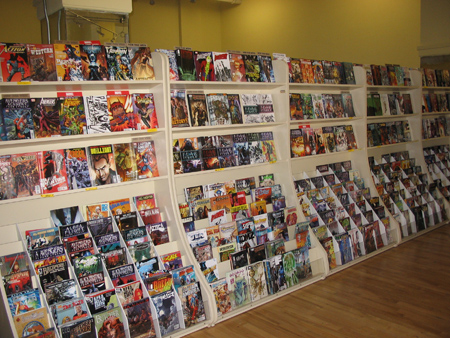


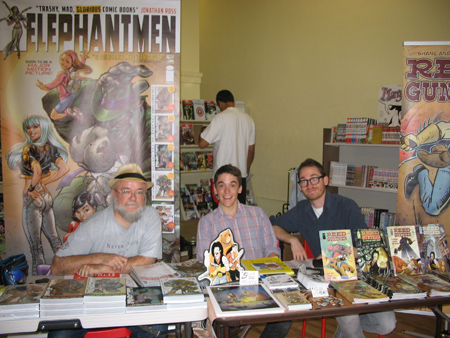







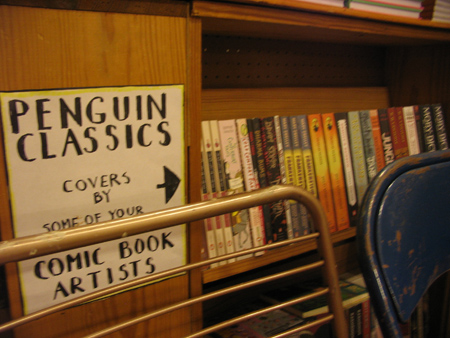


 So, Valerie D’Orazio recently
So, Valerie D’Orazio recently 



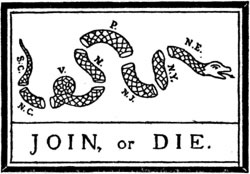 However, the comics form has rarely, if ever, been used for a more in-depth look at political candidates’ histories and positions on issues. For that matter, while autobiography is common, there are relatively few comics biographies—political or otherwise—in print. There may be good reasons for this, and IDW’s new Presidential Material comics, while stronger than I’d anticipated, reveal several of the factors that make serious biographical work so rare in comics.
However, the comics form has rarely, if ever, been used for a more in-depth look at political candidates’ histories and positions on issues. For that matter, while autobiography is common, there are relatively few comics biographies—political or otherwise—in print. There may be good reasons for this, and IDW’s new Presidential Material comics, while stronger than I’d anticipated, reveal several of the factors that make serious biographical work so rare in comics.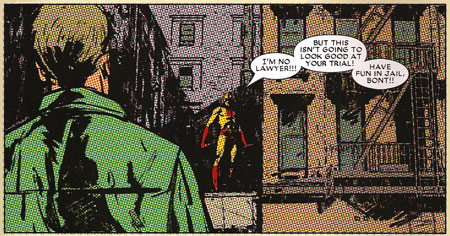
 Stayed in a with a friend on Halloween, watched the original
Stayed in a with a friend on Halloween, watched the original 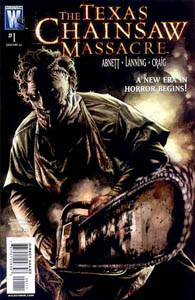 Turns out The Texas Chainsaw Massacre has been published by four different publishers, Northstar, Topps, Avatar and, currently, DC/Wildstorm (which makes sense, as Time Warner owns both DC and New Line Cinema, the studio that produces the films). Northstar’s contribution, Leatherface, is a loose adaptation of Leatherface: Texas Chainsaw Massacre III. Avatar and Wildstorm’s series are in the continuity of the TCM remake series from a few years ago, and just from the Wikipedia synopses show how trying to create an ongoing continuity sucks the life out an original story.
Turns out The Texas Chainsaw Massacre has been published by four different publishers, Northstar, Topps, Avatar and, currently, DC/Wildstorm (which makes sense, as Time Warner owns both DC and New Line Cinema, the studio that produces the films). Northstar’s contribution, Leatherface, is a loose adaptation of Leatherface: Texas Chainsaw Massacre III. Avatar and Wildstorm’s series are in the continuity of the TCM remake series from a few years ago, and just from the Wikipedia synopses show how trying to create an ongoing continuity sucks the life out an original story. Subcribe to The Wright Feed.
Subcribe to The Wright Feed.